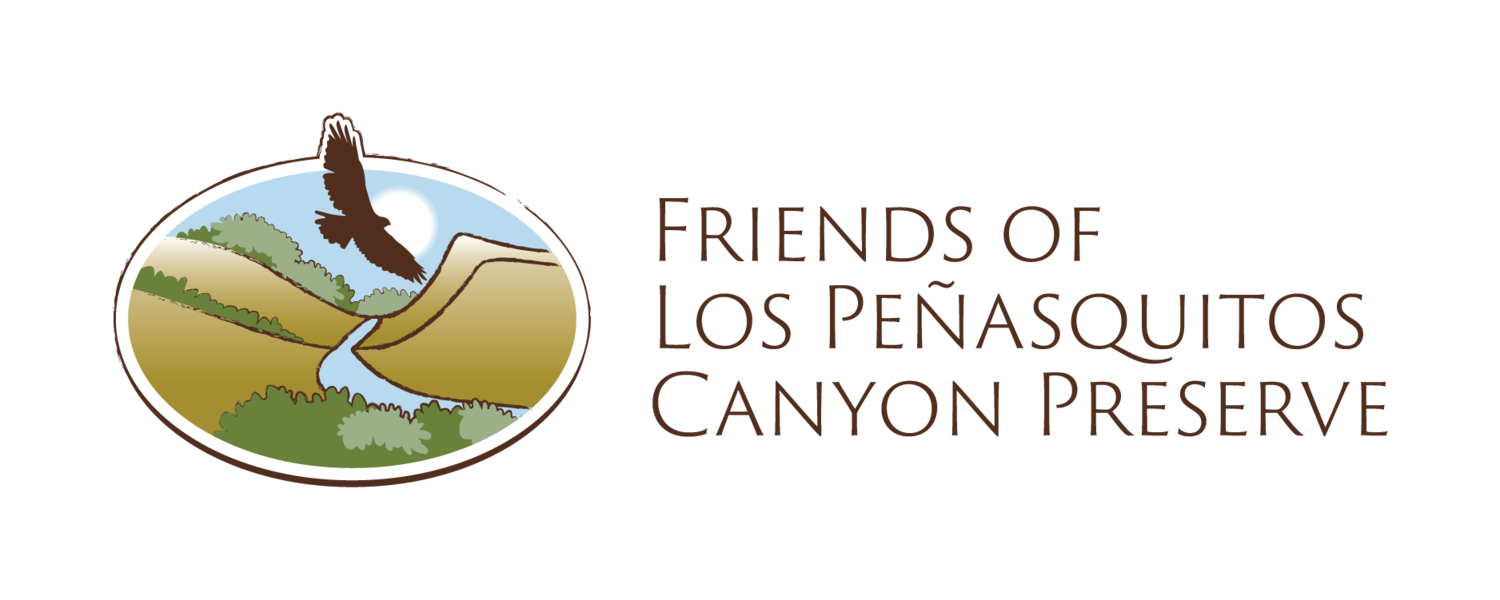Is It a Hare or a Rabbit?
by Mike Kelly
[Thanks to ChatGPT for some basic facts. The experiences and observations are the author’s.]
If you’re hiking or biking the Lusardi Loop Trail in the Santa Luz grasslands of Black Mtn. Open Space Park, you might see a rabbit or a hare! Do you know how to tell them apart?
I’ve encountered both species while working restoration projects in two sites. One place is our site just inside the park next to Black Mtn. Community Ranch Park at 14700 Carmel Valley Rd. in Rancho Peñasquitos. Another is what we call Cactus wren site #2, a high terrace along the loop trail. If you’ve been along there, you’ll know it by the massive cactus population covering much of the terrace. That’s where we’ve seen Black-tailed jackrabbits. Cottontails, on the other hand, we see almost everywhere including the yards in my neighborhood! Easy way to tell them apart? Their tails. Cottontails have white tails while the hares have black ones. Let’s look at the two species.
Before looking more closely at these species, let’s check out their evolutionary history. These two species are the black-tailed jackrabbit (Lepus californicus) also known as the desert hare, and the European rabbit (Oryctolagus cuniculus), from which other rabbit species originated. They probably diverged genetically from each other some 12-18 million years ago, during the Miocene Epoch. They each adapted differently to changing environmental conditions.
Let’s look at the two species. Hares are much bigger than cottontails when mature. Besides the distinctive black tails, they have much taller ears, often with black tips and their hind legs are also much longer than rabbits. This makes for speed, so where the cottontail, as I have seen many times, will freeze in place to hide from predators, the jackrabbit takes off with speeds up to 40 miles per hour to escape its predators! Wow, wish I could achieve that!
There are big differences in their birth and early development. Rabbits are born blind, hairless and helpless. They need to be cared for in a burrow or a nest. I have stumbled over some of these nests over my years of work in the field. They weren’t impressive; they were thinly built and not very well concealed. I hate to say it but at least once I stepped on such a baby in a nest; so did at least one employee. Burrows are much safer.Hares are born with all the fur they need, their eyes are open, and they can move pretty quickly after birth. Hares too are born in nests above ground. But they can move sooner and quicker! Rabbits prefer underground warrens (connected tunnels underground). Rabbits are more social critters who prefer to live in a group while hares are solitary, except for mating season!
Both species are herbivores, meaning they eat plants. Rabbits tend to eat softer materials such as grasses while hares will eat these plus shrubs, bark, twigs. This broader diet allows the jackrabbit to survive in the more arid environments of North America. However, both love our native grasses we plant in our Santa Luz restoration sites. They eat our state grass, Nasella pulcra (purple needle grass) and our Bothriochloa barbinoides (plumbed beard grass). In fact, if we didn’t protect our plantings with those blue plant shelters you can see out there, they would kill them. If the grasses are young, with undeveloped root systems, they can be killed along with the browsed above ground leaves.
Decades ago, I made the mistake of leaving some trays of purple needle grass seedings out overnight on a restoration site in Peñasquitos Canyon. The next morning, we came in to plant and not a grass was left! All had been eaten. So, we learned to put plant shelters on these grasses to protect them from the herbivory of these two Leporidae family species. The shelters give them time to get those roots down and established, which means the top leaves can be eaten down time and again without killing the mother plant. Every time we visit our sites we find browse. We know by who by looking for the scat. Del Brooks, who, like me, went through training with the San Diego Tracking Team (www.sdtt) was able to tell the difference between the scat of the jackrabbit from the cottontail. And occasionally from the rare deer that visits our site. And you can tell from the bite marks left on the leaf stumps.
Physically, there’s another important difference. The long ears of the hare have a dual function. Besides providing hearing, they also help regulate their body temperature by dissipating excess heat. Jackrabbits are also crepuscular, making them most active in the dawn hours and dusk hours, in common with lots of other native wildlife.
Reproduction in both species occurs year-round with multiple litters of up to 8. This reproductive capability is important since both are subject to heavy predation by bobcats, coyotes, foxes, hawks, owls, and more. And both have been heavily hunted by humans over the centuries. I have to admit I have eaten hare, but I don’t think rabbit. I once had an East German boarder who wanted to serve me a typical German meal. It took her weeks to find a meat market offering hare. It turns out that they hide it in the back freezers since displaying it in the front meat cases can disturb members of the public (Bugs Bunny anyone?).
Although habitat loss threatens both species, they have both proven to be adaptable. Cottontails tolerate human presence well and love our lawns and gardens. Jackrabbits tolerate a variety of habitat types, from our restoration sites in Santa Luz to our deserts. Both species are an important food source for other animals, but they also serve to control some grasses and other vegetation through their grazing habits.
In any case, our habitat restoration sites have proven hospitable to both species. Just what we want.


